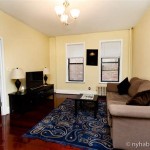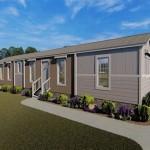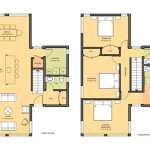Exploring the Grandeur: 8-Bedroom House Floor Plans
The concept of an 8-bedroom house floor plan evokes notions of expansive living, catering to large families, multi-generational households, or those who frequently host guests. Designing such a residence demands careful consideration of space allocation, functional requirements, and aesthetic appeal. These floor plans represent a significant investment in both land and construction, necessitating meticulous planning to maximize the potential of the property.
An 8-bedroom house is not merely a larger version of a standard family home; it represents a different lifestyle. The scale alone introduces complexities in terms of utilities, circulation, and overall design coherence. The design process must balance the need for private spaces (bedrooms, bathrooms) with communal areas (living rooms, dining areas, kitchens) to ensure that the house feels both spacious and intimate, depending on the context and need.
Understanding the Needs for an 8-Bedroom House
Before embarking on the design of an 8-bedroom house floor plan, a clear understanding of the occupants' needs is paramount. This involves identifying the number of permanent residents, their ages, and their individual requirements. Are there elderly family members who require ground-floor access and specialized bathroom features? Are there young children who need dedicated play areas? The answers to these questions significantly impact the layout and features of the house.
Furthermore, consideration must be given to lifestyle preferences. Does the family frequently entertain guests? Is there a need for a home office or library? Are there specific hobbies or interests that require dedicated spaces, such as a home theater, a gym, or an art studio? Addressing these questions early in the design process ensures that the house is tailored to the family's unique needs and aspirations.
Finally, the target demographic is crucial for resale purposes. While the immediate needs of the current owners are important, considering future market trends can ensure the property’s value and desirability in the long term. Analyzing what features are sought after by potential buyers in the area can inform design decisions and ensure a better return on investment.
Key Considerations in Designing an 8-Bedroom House Floor Plan
Designing an 8-bedroom house floor plan presents unique challenges and opportunities. Several key considerations must be addressed to ensure a functional, comfortable, and aesthetically pleasing living environment.
Zoning and Circulation: Zoning refers to the strategic grouping of spaces based on their function. In an 8-bedroom house, it is important to clearly delineate between private zones (bedrooms, bathrooms) and public zones (living rooms, dining areas). This can be achieved by placing bedrooms on upper floors or in separate wings of the house, away from the noise and activity of the main living areas. Efficient circulation is also crucial. Hallways should be wide enough to accommodate traffic flow, and stairs should be strategically located to provide easy access to all floors.
Scale and Proportion: The sheer size of an 8-bedroom house can be overwhelming if not properly addressed. Scale and proportion are essential elements in creating a visually appealing and comfortable living environment. Rooms should be appropriately sized for their intended use, and ceiling heights should be proportionate to the room's dimensions. Large open spaces can be broken up with architectural features, such as columns, arches, or changes in flooring, to create a sense of intimacy and definition.
Natural Light and Ventilation: Maximizing natural light and ventilation is crucial for creating a healthy and comfortable living environment. Large windows and strategically placed skylights can bring natural light into the interior spaces. Proper ventilation ensures air circulation and prevents the buildup of moisture and odors. Orienting the house to take advantage of prevailing winds can further enhance natural ventilation.
Privacy and Noise Reduction: In a large household, privacy and noise reduction are essential for maintaining a peaceful living environment. Bedrooms should be strategically located to minimize noise from adjacent rooms or outdoor sources. Soundproofing materials can be used in walls and ceilings to further reduce noise transmission. Providing each bedroom with its own en-suite bathroom can also enhance privacy.
Accessibility: Designing for accessibility is important, especially if the house will be occupied by elderly family members or individuals with disabilities. This may involve incorporating features such as ramps, wider doorways, and accessible bathrooms. Even if accessibility is not an immediate concern, designing with universal design principles in mind can make the house more adaptable to future needs.
Floor Plan Layout Options for 8-Bedroom Houses
Several floor plan layouts can accommodate eight bedrooms, each with its own advantages and disadvantages. The optimal choice depends on the site's characteristics, the family's needs, and the desired aesthetic.
Two-Story Layout: A two-story layout is a common solution for 8-bedroom houses. Typically, the ground floor accommodates the main living areas (living room, dining room, kitchen), along with a master suite and perhaps one or two additional bedrooms. The upper floor houses the remaining bedrooms, along with additional bathrooms and perhaps a secondary living area or game room. This layout provides a clear separation between public and private zones.
Three-Story Layout: A three-story layout is another option, particularly for sites with limited horizontal space. In this layout, the ground floor may contain the main living areas, while the upper floors house the bedrooms. A basement level can be used for additional living space, such as a home theater, a gym, or a storage area.
Rambler/Ranch Layout: While less common for 8-bedroom houses due to the large footprint required, a rambler or ranch layout can be suitable for larger properties. This one-story layout offers the advantage of single-level living, which can be appealing to elderly or disabled individuals. However, it requires a significantly larger lot size compared to two- or three-story layouts. This style might also require more extensive modifications to ensure sufficient natural light reaches the interior bedrooms.
Wing Layout: A wing layout involves separating the bedrooms into distinct wings of the house, each with its own bathroom and living area. This layout provides enhanced privacy for occupants and can be particularly well-suited for multi-generational households. The central portion of the house typically contains the main living areas, such as the living room, dining room, and kitchen.
Within these broad categories, numerous variations are possible. For example, a two-story house could incorporate a split-level design, where certain areas of the house are slightly offset in height from others. This can create visual interest and help to define different zones within the house.
Specific Room Considerations
Beyond the overall layout, the design of individual rooms within an 8-bedroom house requires careful attention. The following are some key considerations for specific rooms.
Bedrooms: Bedroom size should be adequate to accommodate a bed, a dresser, and a closet. En-suite bathrooms are highly desirable, especially for master suites. Consider the placement of windows to maximize natural light and ventilation while maintaining privacy. Built-in storage solutions can help to maximize space and keep the room organized.
Bathrooms: Adequate bathroom facilities are essential in an 8-bedroom house. In addition to en-suite bathrooms, consider providing a powder room for guests on the main floor. The design of bathrooms should prioritize functionality, durability, and ease of cleaning. Non-slip flooring, grab bars, and curbless showers can enhance accessibility.
Kitchen: The kitchen is the heart of the home, and it should be designed to accommodate the needs of a large family. Ample counter space, storage, and appliance capacity are essential. Consider incorporating a large island or peninsula to provide additional workspace and seating. A walk-in pantry can provide valuable storage for food and supplies. The layout should prioritize efficiency and ease of movement.
Living Rooms: Living rooms should be spacious and comfortable, providing a gathering place for family and friends. Consider incorporating a fireplace or other focal point. The placement of windows should maximize natural light and views. Durable and easy-to-clean materials are recommended, especially in high-traffic areas.
Dining Areas: The dining area should be large enough to accommodate a large dining table and chairs. Consider the placement of the dining area in relation to the kitchen to facilitate serving food. A formal dining room can be used for special occasions, while a more casual dining area can be used for everyday meals.
Sustainability and Energy Efficiency
In the design of any new home, especially a large one like an 8-bedroom house, sustainability and energy efficiency are pivotal considerations. Implementing eco-friendly design strategies can dramatically reduce the environmental impact of the home and lower long-term operating costs. This includes everything from material selection to energy-efficient appliances.
Energy-Efficient Design: The first step in sustainable design is to optimize the building's orientation and layout to maximize passive solar heating and cooling. This involves positioning the house to take advantage of sunlight in the winter and shade in the summer. Overhangs, awnings, and strategically placed trees can help to reduce solar heat gain. High-performance windows and insulation are also crucial for minimizing energy loss.
Sustainable Materials: Choosing sustainable building materials is another important aspect of environmentally responsible design. This includes materials such as recycled content, sustainably harvested wood, and low-VOC (volatile organic compound) paints and finishes. These materials reduce the environmental impact of the construction process and improve indoor air quality.
Renewable Energy: Consider incorporating renewable energy systems, such as solar panels or geothermal heating, to reduce reliance on fossil fuels. Solar panels can generate electricity for the house, while geothermal systems can provide efficient heating and cooling. These systems can significantly reduce energy bills and carbon footprint.
Water Conservation: Implement water-saving measures throughout the house, such as low-flow toilets, showerheads, and faucets. Collect rainwater for irrigation and consider using a greywater system to recycle water from showers and sinks for non-potable uses, such as toilet flushing.

Eight Bedroom European House Plan 290007iy Architectural Designs Plans

Incredible 8 Bedroom Southern Craftsman Floor Plan With Bonus Room

Luxury Home Plan 8 Bedrms 7 5 Baths 11104 Sq Ft 156 1596 Tuscan House Plans Monster

Mediterranean House Plan 8 Bedrooms Bath 11105 Sq Ft 19 940 Monster Plans

8 Bedroom House Plans Blog Homeplans Com

8 Bedroom Homes Ranging From 3 437 To 4 057 Square Feet The Two Story Residence Planos De Casas Lujo Casa Dos Pisos

Grand 3 Story 8 Bedroom House Plan
French Home Plan 8 Bedrms 7 5 Baths 11877 Sq Ft 156 2307

Multi Family Duplex House Plans 8 Bedroom Home Modern Etsy
Luxury Home Plan 8 Bedrms 7 5 Baths 11104 Sq Ft 156 1596
See Also








